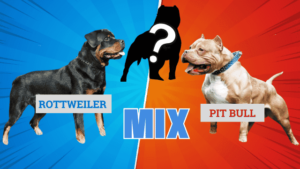Alsatian vs Rottweiler Key Takeaways
- ✓ Physical Differences: Alsatians are leaner and more athletic (50-90 lbs), while Rottweilers are more muscular and substantial (80-135 lbs).
- ✓ Temperament: Alsatians are intense and vigilant with high energy, while Rottweilers tend to be more laid-back and methodical.
- ✓ Exercise Needs: Alsatians require 1-2 hours of daily exercise, while Rottweilers need slightly less at 1-1.5 hours.
- ✓ Grooming: Alsatians need frequent brushing (3-4 times weekly) due to heavy shedding, while Rottweilers require only weekly brushing.
- ✓ Health Considerations: Both breeds are prone to hip dysplasia, but Alsatians tend to have more genetic health issues overall.
Contemplating between an Alsatian (German Shepherd) and a Rottweiler? As a veterinarian who’s treated countless dogs and raised Rottweilers for over 15 years, I’ll help you make this crucial decision. According to the American Kennel Club, both breeds consistently rank among the top 10 most popular dogs in America, and for good reason!
These magnificent breeds share a reputation as excellent guard dogs, but they’re as different as chalk and cheese when it comes to their personalities and care requirements. Whether you’re drawn to the elegant athleticism of the Alsatian or the robust power of the Rottweiler, this comprehensive guide will break down everything from physical characteristics to maintenance costs.
Having personally rehabilitated both breeds in my clinic, I can tell you that choosing between these two isn’t just about their looks – it’s about finding the perfect match for your lifestyle, living space, and family dynamics. Let’s dive into what makes each breed uniquely special and help you make an informed decision.
Physical Characteristics and Appearance
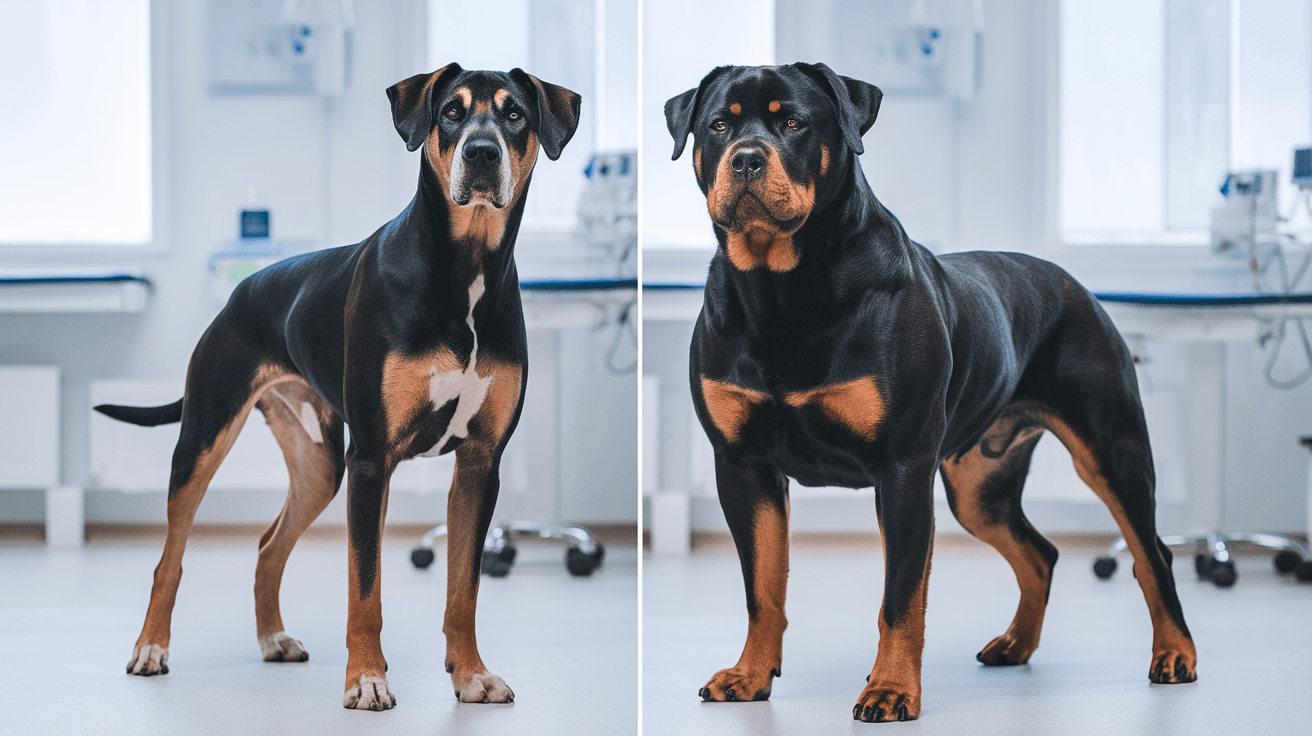
In my veterinary practice, I’ve examined countless Alsatians and Rottweilers, and their physical differences never cease to amaze me. I remember treating a pair – an Alsatian named Max and a Rottweiler called Bear – who perfectly exemplified their breed characteristics while sharing the waiting room. The contrast was striking!
Size, Weight, and Height Differences
According to the American Kennel Club’s breed standards, Alsatians typically stand 22-26 inches tall and weigh 50-90 pounds, while Rottweilers are generally more substantial, weighing 80-135 pounds at similar heights. Think of it this way: if these breeds were athletes, Alsatians would be marathon runners, while Rottweilers would be powerlifters.
Coat Types and Colors
When it comes to coats, these breeds couldn’t be more different. Alsatians sport a double coat with various color combinations – the most common being black and tan, though you’ll also see sable, black, and even white variations. Rottweilers, on the other hand, maintain their classic black coat with mahogany, rust, or tan markings – what I like to call their “natural tuxedo.”
Distinctive Breed Features
The head structure and overall build of these breeds tell different stories. Alsatians have that distinctive wolf-like appearance with erect ears and a long, sloping back. Their muzzle is longer and more pointed. Rottweilers feature a more muscular, compact build with a broader head and chest. Their expression is often described as noble and alert.
One interesting feature I often point out to new owners is their tail characteristics. While Alsatians have long, bushy tails that curve gently, many Rottweilers in the United States have traditionally docked tails, though this practice is becoming less common in many countries for ethical reasons.
Based on my experience rehabilitating both breeds, I can tell you that their physical characteristics significantly influence their movement patterns. Alsatians tend to have a smooth, ground-covering gait, while Rottweilers display a more powerful, purposeful stride. These physical traits directly impact their exercise needs and working capabilities, which we’ll explore in later sections.
Temperament and Personality Traits
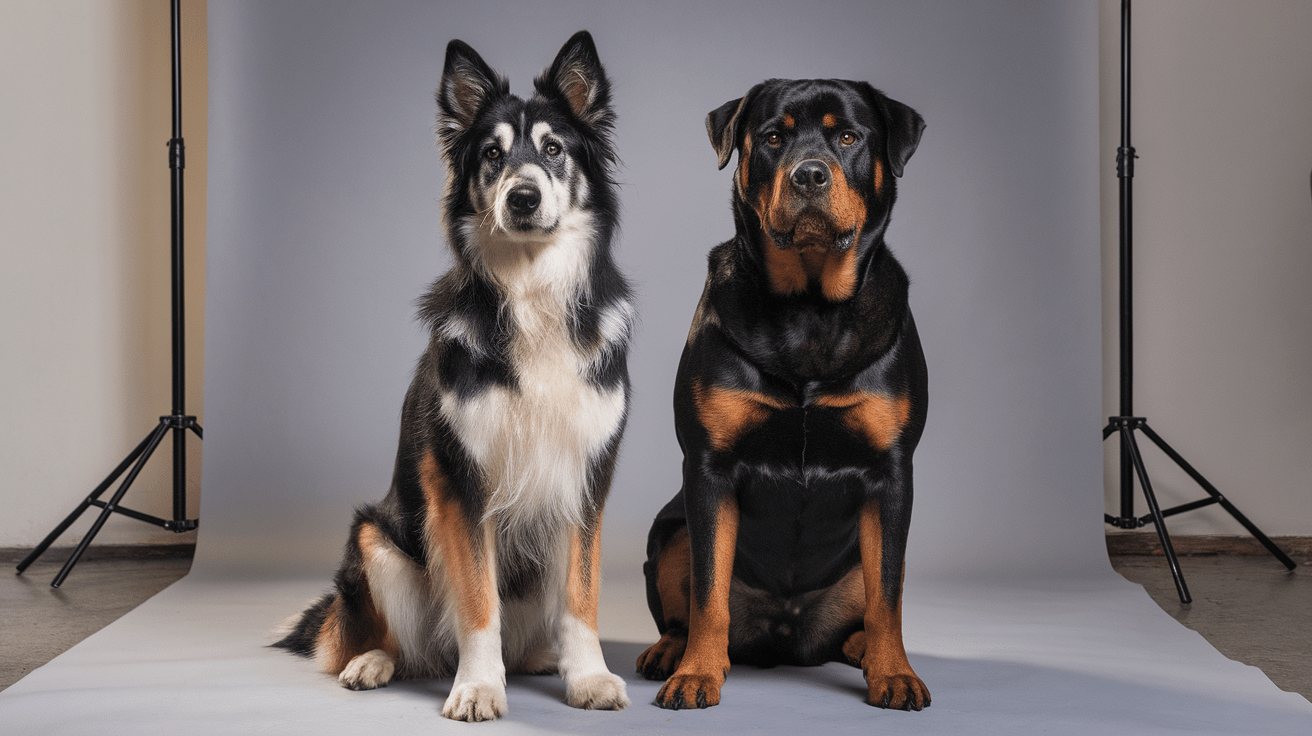
Having worked with both breeds in various behavioral training programs, I’ve noticed their distinct personality patterns. Last month, I witnessed a perfect example when an Alsatian and a Rottweiler responded differently to a children’s birthday party at my clinic – it perfectly showcased their unique temperaments.
Intelligence and Trainability
According to research published in Applied Animal Behaviour Science, both breeds rank in the top 10 for working intelligence. However, they learn differently. Alsatians excel at complex tasks and can learn new commands in as few as 5 repetitions. They’re like eager students always raising their hands in class. Rottweilers, while equally intelligent, tend to be more methodical learners – think of them as the thoughtful problem-solvers who consider every angle before acting.
Family Compatibility
When it comes to family life, both breeds can be exceptional companions, but their approaches differ significantly. Alsatians typically bond closely with one family member while remaining loyal to all. They’re natural herders and might try to ‘gather’ young children – something I often warn new families about.
Rottweilers, contrary to their imposing appearance, are often gentle giants with their families. I’ve seen countless Rottweilers in my practice who act like oversized lap dogs at home. However, they need proper socialization early on. Both breeds require consistent training to channel their protective instincts appropriately.
Guard Dog Capabilities
In terms of protective instincts, both breeds excel but with different styles. Alsatians are vigilant watchers who will alert you to any unusual activity – they’re like your neighborhood watch captain. Rottweilers, on the other hand, tend to be more discerning – they observe quietly and act only when necessary.
A crucial point I emphasize to prospective owners is that these guarding instincts need proper channeling through early socialization and training. I’ve successfully rehabilitated many dogs of both breeds who were initially too protective simply because their natural instincts weren’t properly directed in their formative months. Remember, a well-balanced guard dog should be confident and stable, not fearful or aggressive.
Health and Care Requirements

During my years of veterinary practice, I’ve noticed distinct patterns in health concerns and care needs between these breeds. Just last week, I treated an 8-year-old Alsatian with hip issues and a 6-year-old Rottweiler with heart concerns – cases that perfectly illustrate the unique health challenges each breed faces.
Common Health Issues
According to the Orthopedic Foundation for Animals, both breeds are prone to specific hereditary conditions. Alsatians commonly face:
• Hip and elbow dysplasia
• Degenerative myelopathy
• Von Willebrand’s disease
Rottweilers typically encounter:
• Hip and elbow dysplasia (though less frequent than Alsatians)
• Aortic stenosis
• Osteosarcoma (bone cancer)
I always tell my clients that these health predispositions are like family traits – they’re possibilities, not guarantees. Regular check-ups and early intervention can significantly improve outcomes.
Exercise Needs
Both breeds are like high-performance vehicles – they need regular “maintenance” to run smoothly. Alsatians typically require 1-2 hours of daily exercise, preferably split between physical activity and mental stimulation. Think of them as the marathon runners of the dog world – they excel at endurance activities.
Rottweilers need slightly less exercise, usually 1-1.5 hours daily, but they require more strength-based activities. They’re like powerlifters – they enjoy activities that engage their muscular build, such as pulling exercises (under proper supervision) and swimming.
Grooming Demands
When it comes to grooming, these breeds have notably different needs. Alsatians are heavy shedders and require brushing 3-4 times weekly, with increased frequency during shedding seasons. I often joke with my clients that you could make a new dog from their weekly shed fur!
Rottweilers, with their shorter coats, are relatively easier to maintain. Weekly brushing is usually sufficient, though they do have their shedding periods. Both breeds need regular nail trimming, ear cleaning, and dental care – what I call the “basic maintenance package” for any dog.
From my experience rehabilitating both breeds, I’ve found that establishing a regular care routine early on is crucial. Whether it’s scheduling exercise sessions or setting up grooming appointments, consistency is key to maintaining their physical and mental well-being. Remember, a well-cared-for dog is a happy dog, and both these breeds deserve nothing less than excellent care to thrive.
Living Environment and Space Needs
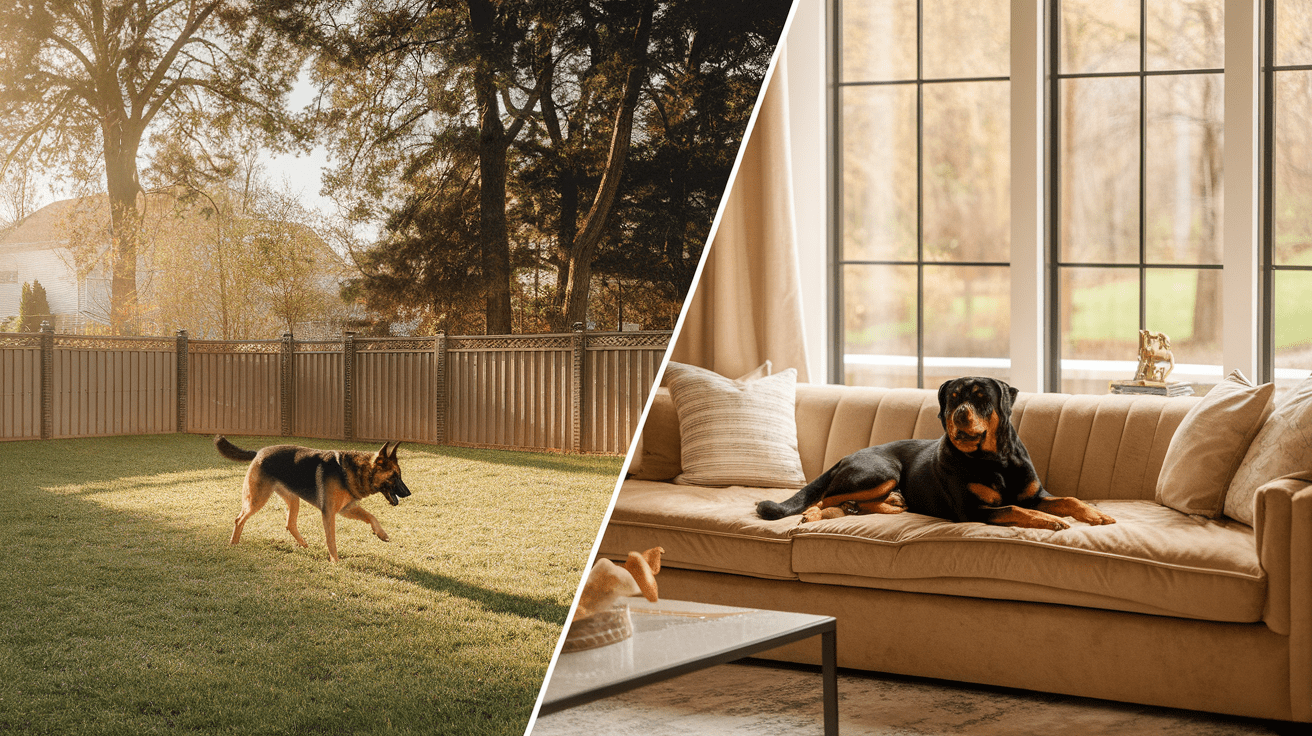
Over my years of practice, I’ve noticed that living space significantly impacts these breeds’ well-being. Just last month, I consulted with a family living in a studio apartment about their Rottweiler’s behavioral issues – a situation that highlighted the importance of appropriate living spaces for large breeds.
Indoor vs Outdoor Living
According to the American Veterinary Medical Association, both breeds can adapt to indoor living, but they have different requirements. Alsatians generally prefer having access to both indoor and outdoor spaces. They thrive with a yard where they can patrol and exercise their herding instincts.
Rottweilers are surprisingly adaptable to indoor living, despite their size. They’re like comfortable couch potatoes who enjoy being close to their family. However, they still need regular outdoor exercise. I always tell my clients: “Your Rottweiler might be happy lounging on your sofa, but don’t let that fool you about their exercise needs!”
Climate Adaptability
Through my clinical experience, I’ve observed distinct climate preferences in these breeds. Alsatians, with their thick double coats, handle cold weather exceptionally well but may struggle in intense heat. Think of them as wearing a permanent winter coat – great for snow, not so much for summer.
Rottweilers, while also double-coated, are more sensitive to temperature extremes. Their black coat absorbs heat quickly, and they can be susceptible to both heat stress and cold weather discomfort. I recommend indoor housing with climate control for both breeds, especially during extreme weather conditions.
Space Requirements
When it comes to space, both breeds benefit from having room to move, but their needs differ. Alsatians typically need more space due to their energy levels and size. I recommend:
• A fenced yard of at least 1,000 square feet
• Secure boundaries (they can be excellent escape artists!)
• Designated patrol areas
Rottweilers can adapt to slightly smaller spaces provided they get adequate exercise outside. They need:
• Enough indoor space to move comfortably
• A comfortable resting area
• Access to outdoor exercise areas
Based on my rehabilitation work, I’ve found that the quality of space matters more than quantity. A smaller, well-organized area with proper enrichment opportunities can be better than a large, empty yard. Remember, these breeds are working dogs at heart – they need space that allows them to fulfill their natural instincts while staying close to their family.
Cost and Maintenance Comparison
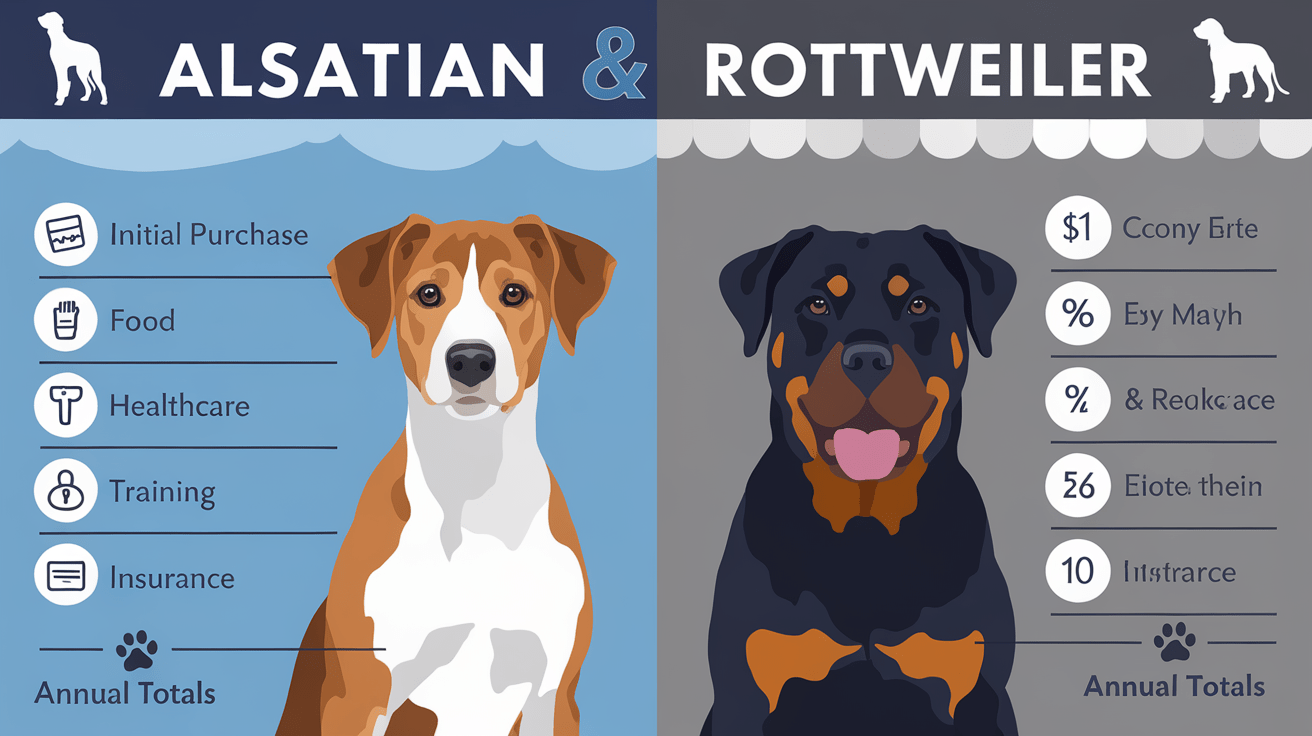
As someone who’s handled both breeds’ medical expenses and advised countless owners on budgeting, I can tell you that the financial commitment varies significantly. Last year, I helped a family budget for their new Alsatian puppy, and the breakdown opened their eyes to the true cost of responsible ownership.
Initial Purchase Price
According to GoodDog’s Breed Cost Calculator, quality puppies from reputable breeders typically range from:
• Alsatians: $1,500 – $3,500
• Rottweilers: $2,000 – $4,000
Remember, these are just starting points. I always tell my clients: “A higher initial cost from a reputable breeder often means lower medical expenses down the line.” Think of it like buying a car – investing in quality upfront can save you from costly repairs later.
Food and Healthcare Expenses
Both breeds are large dogs with hearty appetites, but their nutritional needs differ. Alsatians typically consume 20-40 pounds of high-quality food monthly, costing $60-$100. Rottweilers, being more muscular, often require premium protein-rich diets, running $70-$120 monthly.
Healthcare costs vary significantly. From my experience, routine veterinary care includes:
• Annual check-ups and vaccinations ($200-$400)
• Regular preventive medications ($300-$500 annually)
• Dental care ($500-$1,000 for professional cleaning)
Training and Insurance Costs
Professional training is crucial for both breeds, but the approach differs. Alsatians often excel in group classes, while Rottweilers frequently benefit from one-on-one training initially. Basic training packages typically range from $500-$1,500, depending on your location and needs.
Pet insurance is something I strongly recommend for both breeds. In my practice, I’ve seen how insurance can save owners thousands during emergencies. Premiums generally run higher for these breeds due to their size and predisposition to certain conditions. Expect to pay $40-$100 monthly, with Rottweilers often commanding slightly higher premiums due to their breed-specific health concerns.
When considering total cost of ownership, think of these breeds as long-term investments in your family’s happiness. While the initial and ongoing costs might seem substantial, the joy and companionship they bring are truly priceless. Just ensure you’re financially prepared for the commitment before bringing either breed home.
Frequently Asked Questions About Alsatians vs Rottweilers
Conclusion
After years of working with both breeds, I can confidently say that choosing between an Alsatian and a Rottweiler ultimately comes down to your lifestyle, living space, and personal preferences. Alsatians excel in active households where they can channel their energy into regular training and exercise, while Rottweilers thrive in environments that balance activity with family time. Both breeds make exceptional companions when properly trained and socialized.
Remember that whichever breed you choose, you’re committing to 10-12 years of dedicated care, training, and love. As a veterinarian, I’ve seen both breeds flourish in homes where their physical and emotional needs are met consistently. The key is being honest about your capabilities and choosing the breed that best aligns with your family’s dynamics and resources. Make an informed decision, and you’ll gain a loyal friend for life.
For a deeper understanding of the Rottweiler breed, I highly recommend reading our in-depth 101 Amazing Rottweiler Breed Facts article. This comprehensive guide covers everything from the breed’s fascinating history as Roman cattle drivers to modern care requirements and temperament insights. As both a veterinarian and Rottweiler owner, I’ve found that understanding these fundamental aspects is crucial for potential owners to make an informed decision about bringing a Rottweiler into their home.


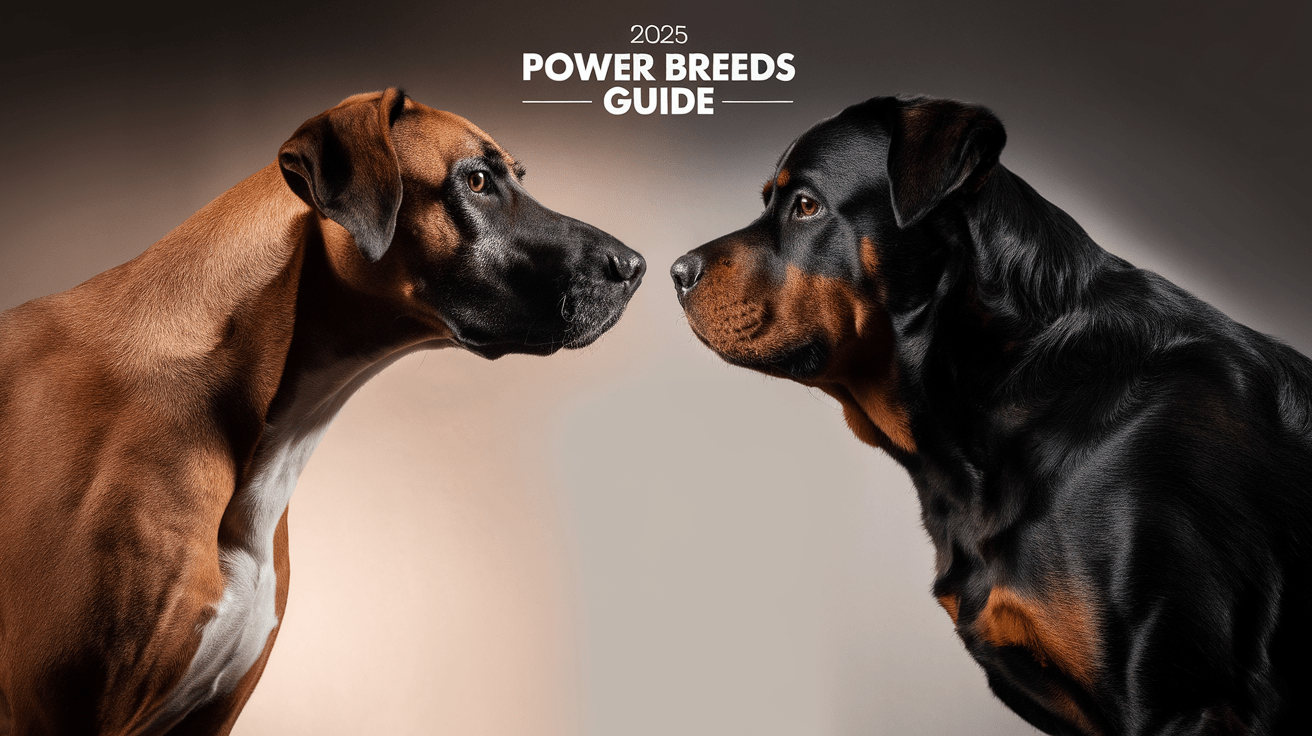


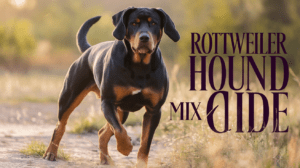
![Read more about the article Rottweiler Clipped Ears: Safe or Cruel? The Ultimate Guide [2024 Update]](https://rottweilerpaw.com/wp-content/uploads/2024/10/Rottweiler-Clipped-Ears-Safe-or-Cruel-The-Ultimate-Guide-2024-Update-300x169.png)
